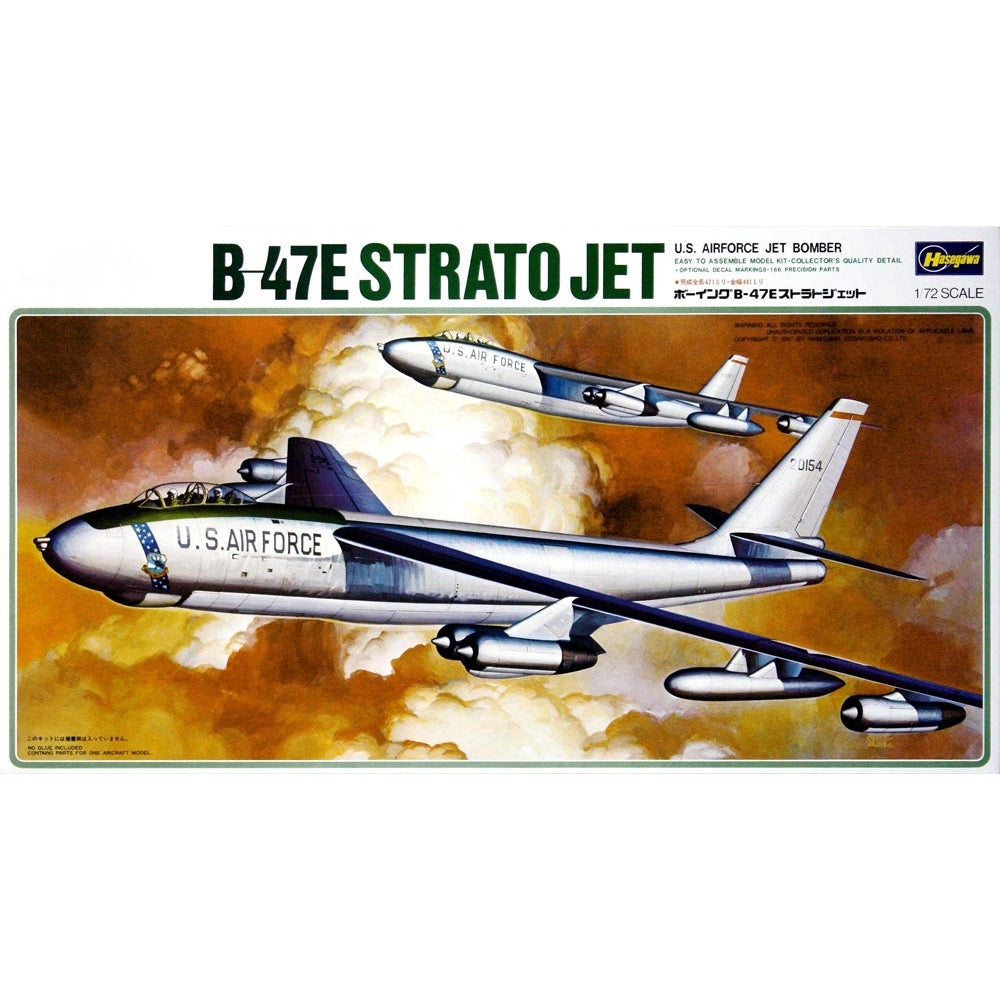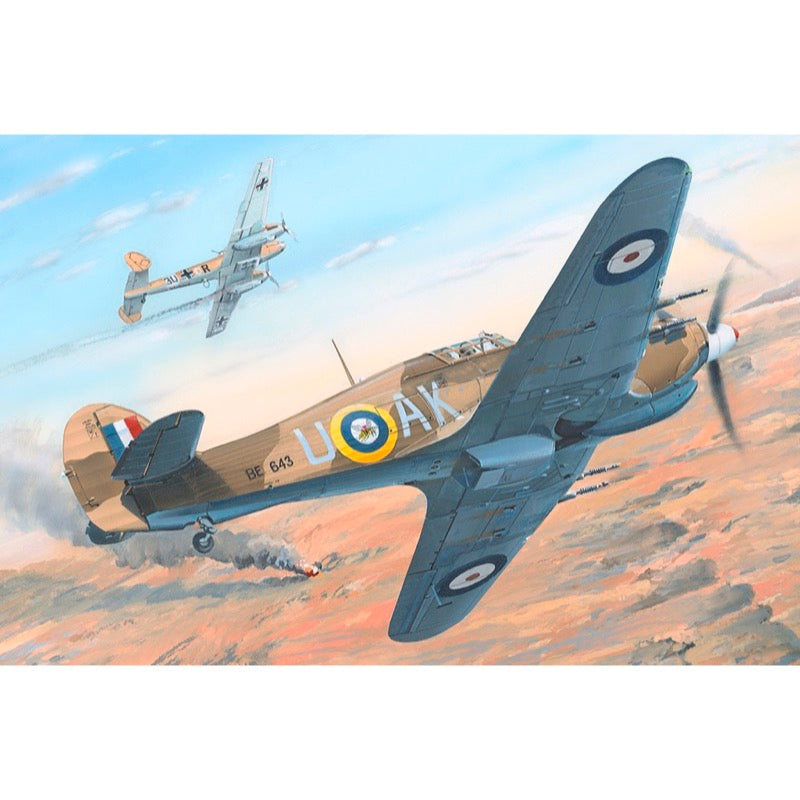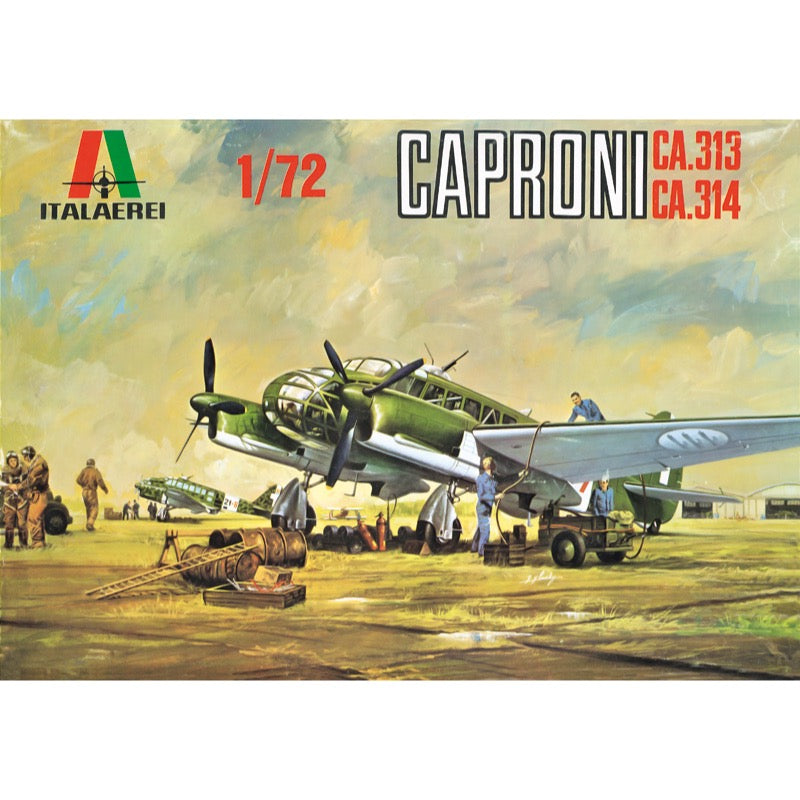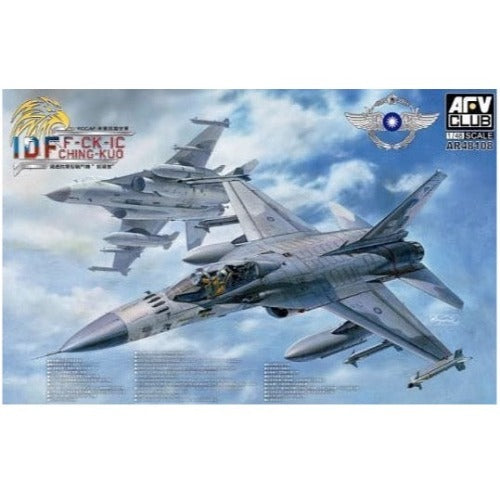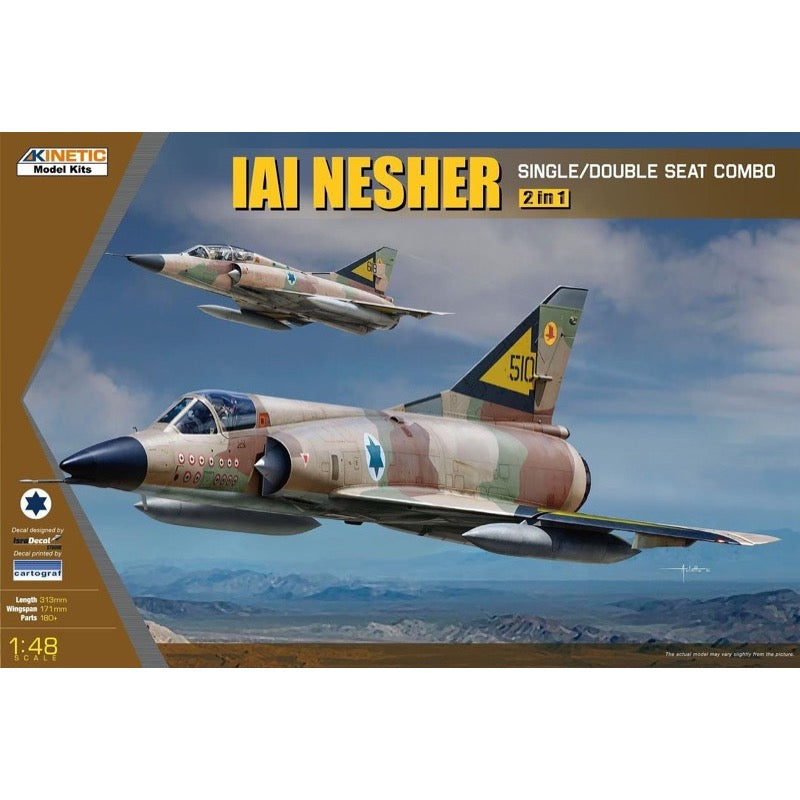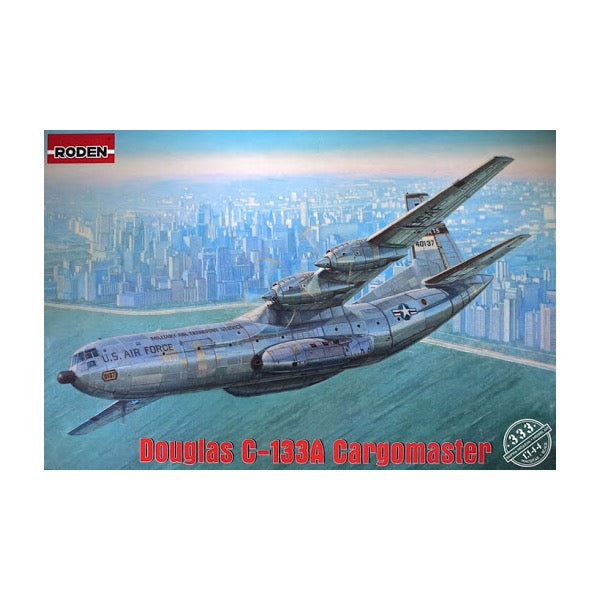
Roden 333 1/144 Douglas C-133A Cargomaster
In the early 1950s, the United States Air Force Military Air Transport Service already operated several successful types of new transport aircraft, such as the Lockheed C-130 Hercules and Douglas C-124 Globemaster II, the latter considered heavy because it could carry loads weighing more than 30 tons. However, it had serious limitations with respect to cargo dimensions, as well as structural problems, since the fuselage loading level was quite high from the ground surface.
At the beginning of 1952, the Air Force announced plans to purchase a new type of aircraft for the MATS under the Logistic Carrier Support System SS402L program. According to the specifications, the aircraft had to be able to lift into the air cargoes weighing more than 45 tons and of super-large clearance.
Aircraft manufacturer Douglas, which had produced transport aircraft for the military for a long time, proposed two designs, the C-132 and the C-133. The C-132 project was rejected over a number of technical issues, and the C-133 immediately received an order for an initial series of 12 aircraft, forgoing the building of any separate prototype for testing. Construction of the first aircraft began at the end of 1953, and on April 23, 1956 the first test flight of the new giant took place. After resolving a few problems, the C-133 series, which was officially named Cargomaster, began to be massproduced, and in August 1957 the 39th Transport Brigade at the Dover Airbase in Delaware received the first series aircraft, followed by the 84th Brigade for the next machine of this type, based at McCord.
The C-133 was operated intensively from 1958 onwards. The world was already on the threshold of a large-scale confrontation, especially in Europe, where the US and the USSR vied for influence over the entire region. The C-133 was the only type that could carry almost 100 percent of the US' military equipment, including most of the main types of armored vehicles, and therefore its role in moving troops to Europe was particularly important at this time.
During series production of the C-133A, its design was constantly modified to improve performance, primarily to increase its load capacity or to transport an ever larger range of over-sized cargoes. Starting from the eighth airframe, the tail section was slightly modified, and from the 33rd, the cargo compartment doors were redesigned, so that they now opened to each side. This allowed the transport of missiles such as the Atlas, Titan and Minuteman in assembled form; previously, their transportation was carried out exclusively by motor transport.
C-133A aircraft were also used by NASA, the National Aeronautics and Space Administration. The C-133A delivered Saturn rockets to the Cape Canaveral Space Center; and after the descent of the vehicle from space, the capsule, having splashed down on the ocean, would also be transported between airbases by an aircraft of this type.
After the start of the war in Vietnam, the United States Air Force, along with other US Air Force transport aircraft, carried out numerous missions for the delivery of military cargoes to the distant south-eastern region. Their role was very important, as the conduct of the conflict, which intensified more and more year by year, required a significant amount of heavy weapons.
However, by the late 1960s, after a thorough examination of the C-133, it became clear that the C-133 showed evidence of extensive fatigue, so that at any moment the possibility of an air crash could not be ruled out. All the C-133A and the later C-133B aircraft were immediately withdrawn from service. For safety reasons, the military decided to use less intensive transportation, in the shape of the more reliable C-130 and C-141. In addition, testing had already ended and series construction begun, of the very heavy Lockheed C-5A Galaxy, which in all parameters exceeded the capacity of the C-133. An initiative to use the C-133 in the field of civil freight traffic also came to nothing, due to safety considerations.
Airplanes were gradually transferred to bases storing obsolete equipment, and some of the most troublesome planes were promptly delivered to aviation museums. In 1976, the transportation company Northern Air Cargo leased one C-133 to transport oilfield equipment to Alaska. In total, 35 of the C-133A were built.
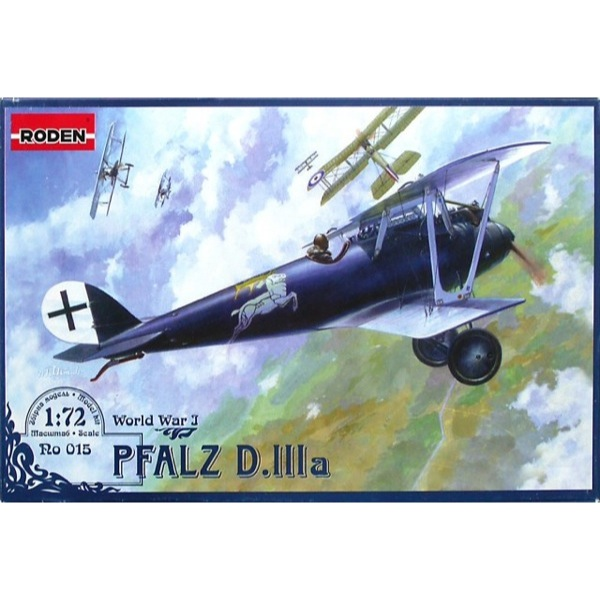
Roden 015 1/72 Pfalz D.IIIA
But installation of its machine gun within the fuselage was more than a failure; the best solution would be placement of the weapon at eye level.
In the autumn of 1917 the first modified aircraft, the Pfalz D.IIIa arrived at the Front. Apart from the weapon installation, the new plane had a square tailplane with increased area. At the end of April 1918, 433 Pfalz D.IIIa's were at the Front, together with the D.III they accounted for about 25 percent of the total for all fighter types. 750 Pfalz D.IIIa's were built in total, more than fifteen Jasta's operated this type. Some aircraft of the last production batch built were delivered to Turkey.
The Pfalz D.IIIa served until the end of war, at times they remained a first line fighter, but in early 1918 (after the Fokker D.VII began to appear), the D.IIIa began to be deleted from its first line position.
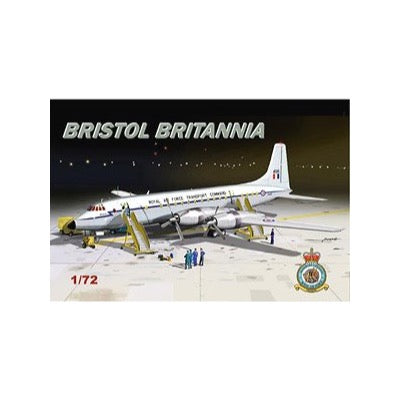
Mach 2 GP087 1/72 Bristol Brittania RAF version
High quality, precision plastic model kit. Paint and glue not included. Requires assembly and painting. For intermediate to advanced skill modellers.
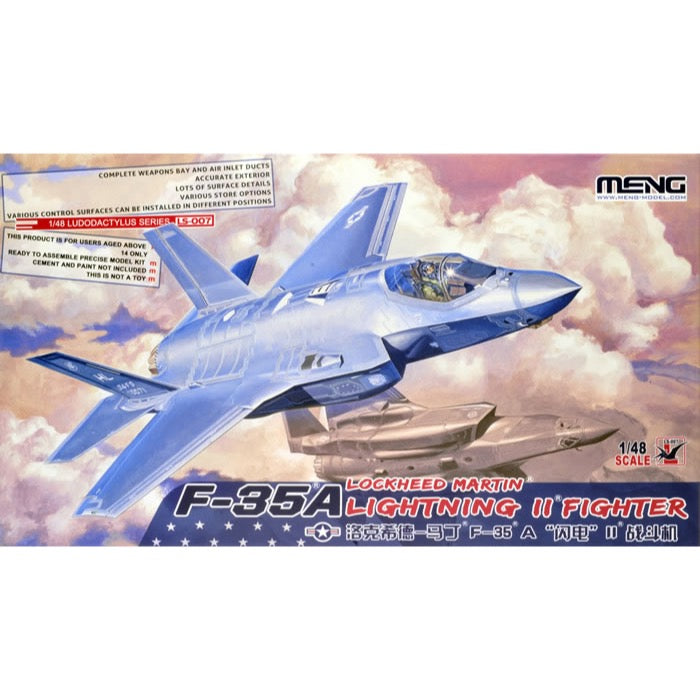
Meng LS-007RG 1/48 F-35A Lightning II RGA RAAF
The Lockheed Martin F-35 Lightning II is a family of single-seat, single-engine, all-weather stealth multirole fighters. The fifth-generation combat aircraft is designed to perform ground attack and air defense missions. It has three main models: the F-35A conventional takeoff and landing (CTOL) variant, the F-35B short take-off and vertical-landing (STOVL) variant, and the F-35C carrier-based Catapult Assisted Take-Off Barrier Arrested Recovery (CATOBAR) variant. On 31 July 2015, the United States Marines declared ready for deployment the first squadron of F-35B fighters after intensive testing. On 2 August 2016, the U.S. Air Force declared its first squadron of F-35A fighters combat-ready.
The F-35 descends from the X-35, the winning design of the Joint Strike Fighter (JSF) program. An aerospace industry team led by Lockheed Martin designed and manufactures it. Other major F-35 industry partners include Northrop Grumman, Pratt & Whitney and BAE Systems. The F-35 first flew on 15 December 2006. The United States plans to buy 2,457 aircraft. Its variants are to provide the bulk of the crewed tactical airpower of the U.S. Air Force, Navy and the Marine Corps over the coming decades. Deliveries of the F-35 for the U.S. military are scheduled until 2037 with a projected service life up to 2070.
The United States principally funds the F-35 JSF development, with additional funding from partners. The partner nations are either NATO members or close U.S. allies. The United Kingdom, Italy, Australia, Canada, Norway, Denmark, the Netherlands, and Turkey are part of the active development program; several additional countries have ordered, or are considering ordering, the F-35.
The program is the most expensive military weapons system in history, and has been much criticized inside and outside government, in the U.S. and in allied countries. Critics argue that the plane is "plagued with design flaws," with many blaming the procurement process in which Lockheed was allowed "to design, test, and produce the F-35 all at the same time, instead of… [identifying and fixing] defects before firing up its production line." By 2014, the program was "$163 billion over budget [and] seven years behind schedule." Critics also contend that the program's high sunk costs and political momentum make it "too big to kill.".
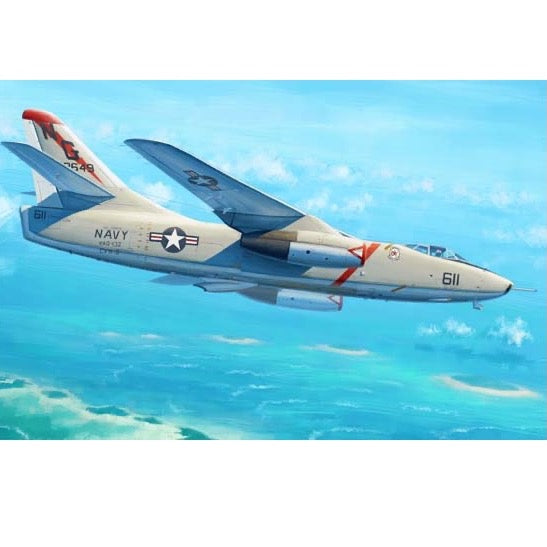
Trumpeter 02869 1/48 KA-3B Skywarrior
The A-3 "Sky Warrior" is a carrier-based strategic nuclear bomber developed by Douglas Company for the U.S. Navy. The aircraft has an all-metal semi-monocoque conventional layout. Two J57 jet engines are hung under the middle of the main wing. The main wing is foldable. It is equipped with a tail turret guided by a radar and has a crew of three. The project began in 1947. The prototype XA3D-1 made its first test flight on October 28, 1952. It entered the U.S. Navy in 1956 and began its service career. A total of 282 aircraft were built before production ended in 1961.
Features
- Detailed fuselage w/accurate design
- Canopy made from clear parts
- Wing can be folded
- Finely detailed cockpit,gear cabin,
- crew seats with photo-etched seat belts and harnesses.
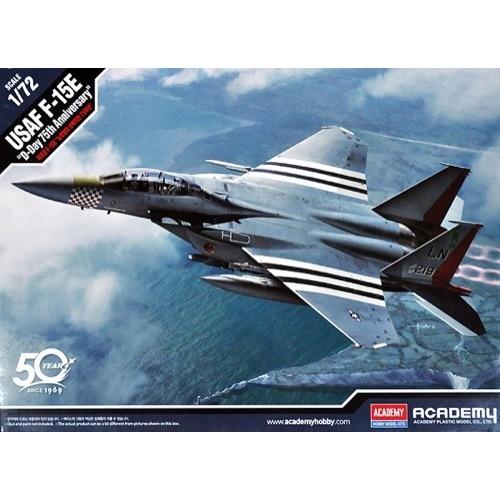
Academy 12568 1/72 USAF F-15E D-Day 75th Anniversary
The McDonnell Douglas F-15 Eagle is an American twin-engine fighter and attack aircraft, the first flight of which took place on July 27, 1972. The F-15 aircraft is the result of the experience gained from air combat over Vietnam, and is also the USAAF's response to the Soviet Mig-23 and Mig-25 fighters. It was created as part of the FX (Fighter Experimental) project, in which the winner was McDonnell-Douglas in 1969. When designing the F-15, particular emphasis was placed on the maximum reduction of service time. Mainly, on the one hand, it was based on the installation of elements that were as easy to use as possible, and on the other hand, the use of automatic systems, which kind of relieve people. As a result, the successor of the F-4 Phantom, surpassing it in all respects, can be served in half the time. Another strength of the F-15 is the pair of Pratt-Whitney F100 afterburner engines, which produce 4,500 kg more thrust than the machine itself weighs, allowing it to make tight turns without sacrificing great speed. In addition, it makes it possible to suspend a huge amount of additional weapons on 8 knots under the wings and fuselage. From the moment the F-15 entered service, several variants were created. The C and D versions are the second generation of single and double seater aircraft, respectively, replacing the A and B versions in 1979. Externally, they do not differ much from them, but the avionics underwent a comprehensive modification, which made the Eagle even more lethal weapon. In the 1980s, the F-15D also experimented with ASAT anti-satellite missiles. A version of the F15-E Strike Eagle was being developed at the same time. Contrary to the previous models, the E version is not only a hunting machine used for air superiority, but also an assault machine with a wide range of possibilities for attacks on ground targets. The E version entered service in 1988 and is expected to remain in the line until 2035. Another variant is the F-15J, exported and produced under license in Japan. F-15 aircraft were exported to several countries, including Japan, Israel, Saudi Arabia and South Korea. The F-15 turned out to be a very valuable machine, achieving air victories, among others. during Operation Desert Storm and the 2003 invasion of Iraq. Technical data (version E): Maximum speed: 2660 km / h, climb speed: 255 m / s, practical ceiling 19500 m, maximum range: 5580 km, armament: fixed - 1 six-barrel M61A-1 20mm cannon, suspended - up to 10660kg load.
In this model kit from Academy, the U.S. Air Force's battle bomber, the F-15E Strike Eagle, wears commemorative paint observing the 76th anniversary of D-Day. Its paint reproduces that worn by the P-47 Thunderbolt belonging to the 48th Fighter Wing which supported the ground attack on that fateful day. The kit has a moderate number of parts for ease of assembly, and all are precisely molded. Decals by Cartograf for two different commemorative versions are included.
This is an injection-plastic jet aircraft model kit.
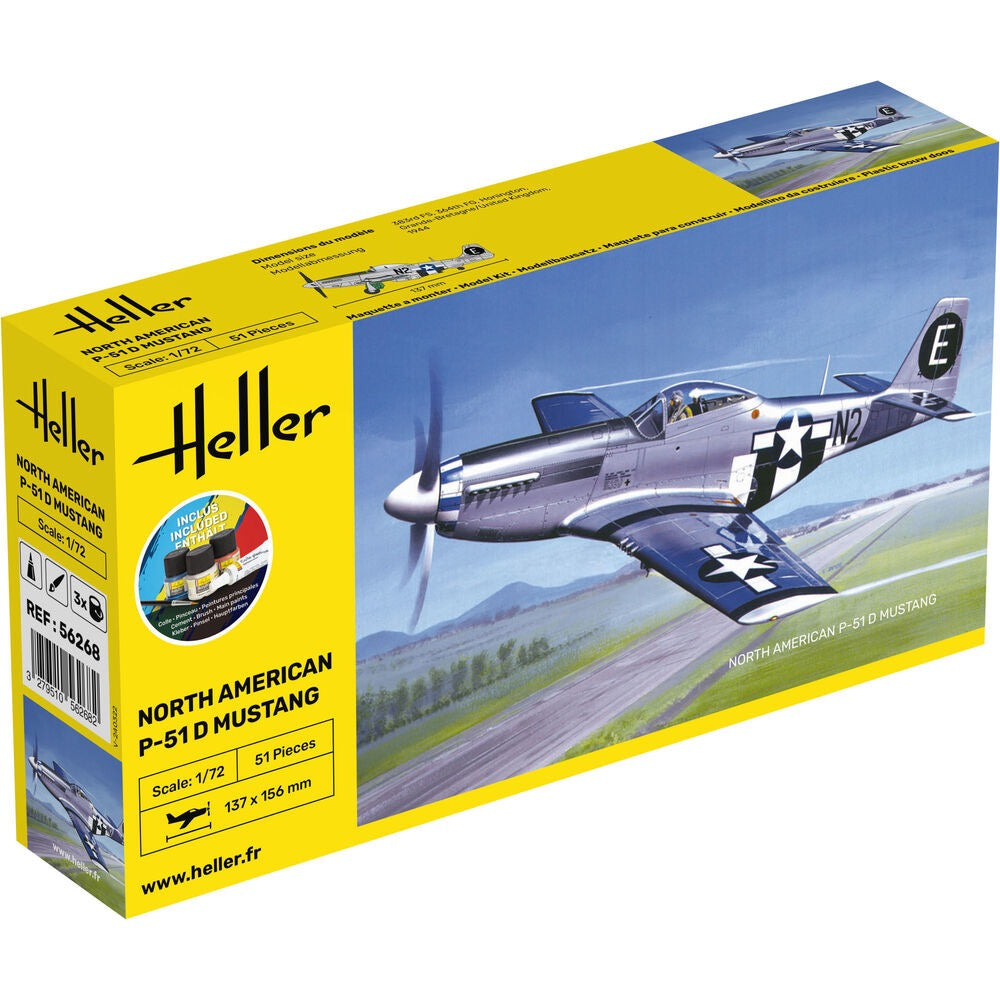
Heller HLL56268 1/72 P-51 Mustang Starter Kit
The North American Mustang is considered to be the best piston- engined single-seater fighter plane of the Second World War. The speed of its design was in itself a record: British workmen, built one in 117 days in 1940!
Specification
- Scale: 1:72
- Parts: 51 pieces
- Packaging: 125 x 235 x 45 mm
Includes
- Cement
- Brush
- Main paints


